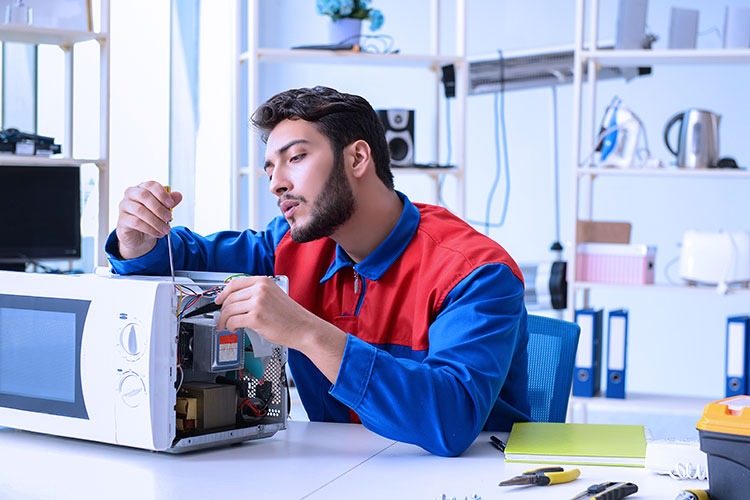Revive Your Stalled Microwave: Essential Steps to Diagnose and Repair
stalls or stops working, it can throw a wrench in your routine. Before you rush to replace it or call a technician, many common microwave problems can be diagnosed and fixed at home with a little know-how. In this guide, we’ll walk you through the most frequent causes of microwave failure, simple repair steps, and tips to keep your appliance running smoothly for years to come.
5/23/20252 min read


Common Reasons Your Microwave Stalls
When your microwave stops working, it’s often due to one of these issues:
1. Blown Fuse
Microwaves have internal fuses that protect the appliance from electrical surges. If a fuse blows, the microwave won’t power on.
2. Faulty Door Switch
Microwaves won’t operate if the door switch isn’t working properly. This safety feature ensures the microwave only runs when the door is securely closed.
3. Defective Control Board or Touchpad
If the control panel is unresponsive or the microwave won’t start, the control board or touchpad may be malfunctioning.
4. Magnetron Failure
The magnetron generates the microwaves that cook your food. If it fails, the microwave may turn on but won’t heat.
5. Power Supply Issues
Check that the microwave is properly plugged in and the outlet is functioning. Sometimes, a tripped breaker or faulty outlet is the culprit.
How to Diagnose and Fix Your Microwave
Step 1: Safety First
Important: Microwaves contain high-voltage components that can be dangerous even when unplugged. If you’re not comfortable working with electrical appliances, it’s best to call a professional.
Step 2: Check the Power Source
Make sure the microwave is plugged in and the outlet works by testing it with another device.
Step 3: Inspect the Door Switch
Open the microwave door and listen for a clicking sound when you close it. If you don’t hear a click, the door switch may be faulty and need replacement.
Step 4: Test the Fuse
Using a multimeter, check the continuity of the microwave’s fuse. If it’s blown, replace it with the exact type specified in your microwave’s manual.
Step 5: Examine the Control Panel
If the buttons don’t respond, try resetting the microwave by unplugging it for a few minutes. Persistent issues may require a control board replacement.
Step 6: Consider the Magnetron
If the microwave powers on but doesn’t heat, the magnetron might be defective. This is a more complex repair and usually requires professional service.
Preventive Tips to Avoid Future Breakdowns
Avoid Running Empty: Never run your microwave empty, as this can damage the magnetron.
Keep the Door Clean: Wipe down the door and seals regularly to ensure the door switch functions properly.
Use Microwave-Safe Containers: Avoid metal or foil that can cause sparks and damage internal components.
Don’t Overload: Avoid heating oversized or heavy items that strain the microwave.
Regular Cleaning: Clean the interior to prevent food buildup that can cause odors or damage.
When to Call a Professional
If you’ve checked the basics and your microwave still won’t work, or if you suspect a magnetron or control board issue, it’s safest to contact a qualified technician. Microwaves contain components that can retain dangerous electrical charges, so professional repair is often the best choice.
Conclusion
A stalled microwave doesn’t always mean it’s time for a replacement. By understanding common problems like blown fuses and faulty door switches, you can often troubleshoot and fix the issue yourself. Regular maintenance and careful use will also help extend the life of your microwave, keeping it reliable for your daily cooking needs.
Proyojani Repairing Centre
Premium appliances for every culinary enthusiast's needs.
© 2025. All rights reserved.
Contact
117/B Hemchandra Naskar Road, Phoolbagan, 700010
